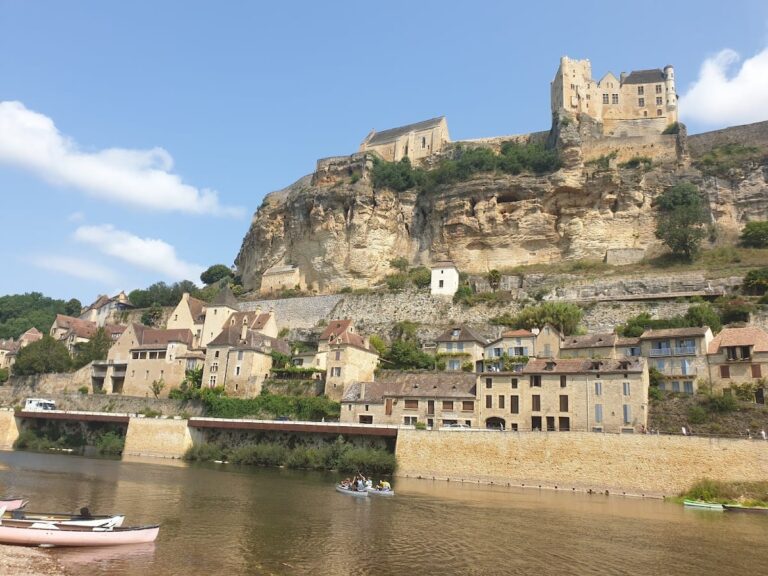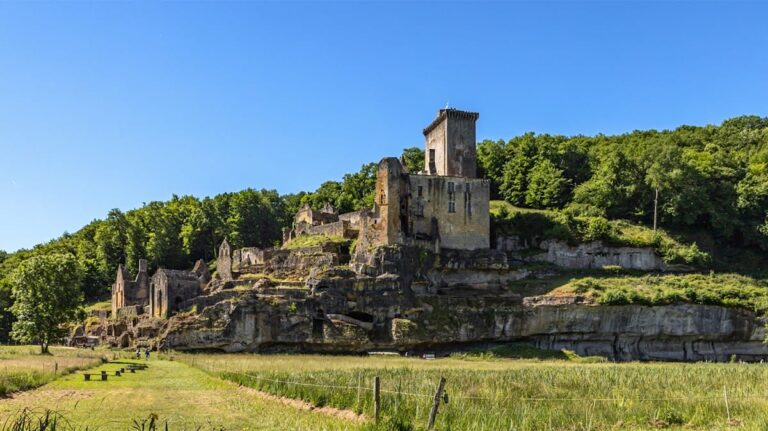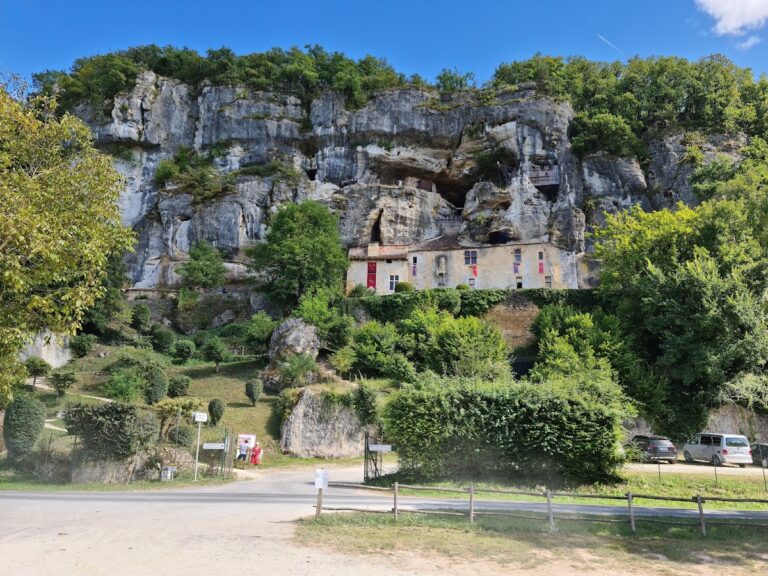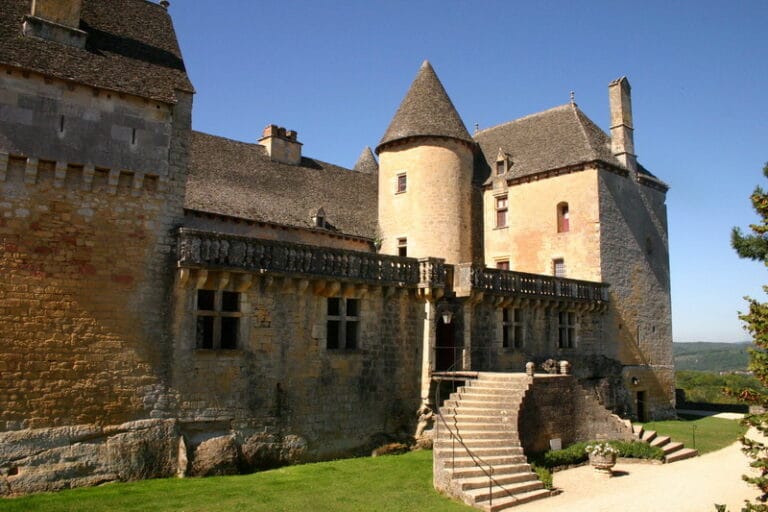Castle of Milandes: A Historic Residence in Dordogne, France
Visitor Information
Google Rating: 4.7
Popularity: High
Google Maps: View on Google Maps
Official Website: www.milandes.com
Country: France
Civilization: Medieval European
Remains: Military
History
The Castle of Milandes is located in Castelnaud-la-Chapelle, Dordogne, in the southwestern region of France. It was built in 1489 by François de Caumont, Count of Castelnaud, as the main residence for the Caumont family, who also owned nearby castles such as Castelnaud and Berbiguières. The castle served as their principal home until 1535.
In the early 16th century, François de Caumont’s wife, Claude de Cardaillac, influenced renovations to soften the castle’s austere medieval appearance. She requested the addition of mullioned windows with stained glass, which brightened the interiors while preserving original features like turrets, spiral staircases, and gargoyles. The castle chapel, constructed in 1503, was converted into a Protestant temple following the lords’ religious conversion. This chapel, containing a crypt and 16th-century frescoes including a large Saint Christopher, was initially excluded from the estate due to a cadastral error but was reintegrated in 2018–2019.
During the late 16th and early 17th centuries, Jacques Nompar de Caumont, a marshal and servant of King Henry IV, frequently stayed at Milandes. The castle was abandoned during the French Revolution and sold in the 19th century. Neglect led to a fire around 1900, after which industrialist Charles-Auguste Delbret-Claverie purchased and restored the property. Under architect Henri Lafillée, neo-Gothic and neo-Renaissance elements were added, including new towers, lodgings, balconies, and allegorical sculptures. A formal French garden was designed by Jules Vacherot in 1908, and a winery and farm were established on the estate.
From 1937, the castle was rented and later bought in 1947 by Joséphine Baker, an American-born French singer and entertainer, and her husband Jo Bouillon. They modernized the castle by installing running water, electricity, and central heating. Baker developed an avant-garde tourist complex called “Village du Monde” on the estate, which included a hotel, bar-restaurant, performance hall, wax museum, bowling alley, minigolf, tennis courts, and swimming pool. The couple owned nearly all the houses in the nearby village and 300 hectares of land. Baker lived at Milandes with her twelve adopted children of nine different nationalities, whom she called her “rainbow tribe.”
Financial difficulties led to the announcement of the castle’s auction in 1964. Intervention by public figures such as Brigitte Bardot and François Mauriac delayed the sale temporarily. The castle was eventually sold in 1968 for a fraction of its value. Baker was allowed to remain until March 15, 1969, but was forcibly evicted while on tour. She barricaded herself in the kitchen and later regained limited access by court order. Eventually, she and her children moved to Paris and Monaco.
Since Baker’s ownership, the castle has changed hands four times. It was listed as a historic monument in stages: terraces, facades, and roofs in 1986; the entire estate including winery, garden, and stables in 2009. Since 2001, the property has been owned by Henry and Claude de Labarre and managed by their daughter Angélique de Saint-Exupéry, who initiated restoration efforts and opened an exhibition dedicated to Joséphine Baker. In 2013, the castle received the “Maisons des Illustres” label, recognizing it as a historic residence of a notable personality.
Remains
The Castle of Milandes is situated on a hill about 50 meters above the left bank of the Dordogne River, overlooking the valley. The estate features a terraced French formal garden accessed by monumental staircases. The main building includes a square keep on the south side and two round towers with turreted spiral staircases. The northern facade retains its original late 15th-century appearance, while the southern facade was extensively altered during early 20th-century restorations.
Restorations in the early 1900s introduced neo-Gothic and neo-Renaissance elements, such as new towers, lodgings, balconies, and balustrades decorated with allegorical sculptures. The estate also includes a winery (chai) and a farm established during this period. The castle chapel, dating from 1503 and located deep within the park, contains a crypt and 16th-century frescoes, including a four-meter-tall depiction of Saint Christopher.
Interior renovations under Joséphine Baker’s ownership reflect 1950s style, with marble and gilded decorations in bathrooms and toilets. The keep’s staircases were modified with ornamental ribs known as liernes and tiercerons, which are decorative stone ribs used in vaulted ceilings. The castle’s park and gardens, redesigned in 1908 by Jules Vacherot, maintain a formal French style.
The castle complex includes terraces, facades, roofs, stables, and gardens, all protected as historic monuments. The site hosts annual falconry shows from July to mid-October. Inside, a collection of Joséphine Baker memorabilia is displayed, featuring furniture, stage costumes, and military honors.










